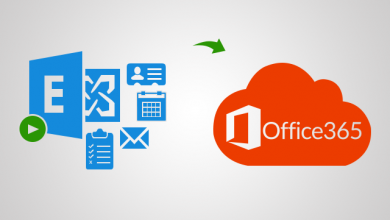How To Enable Fast Startup To Boot Quicker Windows 11?

Microsoft Windows operating system has evolved a lot in the past few years and came up with advanced utilities and options. The latest upgrade to Windows 11 has surprised users with a lot of advanced features and looks. When you install a lot of applications on your Windows, some of them automatically add up in the boot list. This may slow down the boot process and may use a lot of system resources in the background.
There are ways to enable fast boot on Windows 10 or Windows 11 that can load up your computer as you turn it ON. The Fast Startup option was introduced with the release of Windows 8 works similar to the hibernate process. The Fast Startup utility writes the last remembered data on the disk and loads the Hiberfil.sys file once you boot your Windows. Users may face issues while updating from Windows 10 to Windows 11 if the Fast Startup option is turned ON. Here’s how you can enable fast startup on Windows 10 or Windows 11.
Enable Fast Startup on Windows 10
The Fast Startup option is only available on computers that is Hibernation enabled. This feature is available on almost all versions of Windows. You just need to ensure that the Hibernate option is enabled.
Enable Hibernate Mode
Step 1. Press (Win + R) to open the Run command utility.
Step 2. Type CMD and press the (Ctrl + Shift + Enter) key to load the command prompt with administrator mode.
Step 3. Type Powercfg –h on and hit the Enter key to enable Hibernate mode. You can anytime come back to the same window and type Powercfg –h off and hit the Enter key to turn it OFF. Fast Startup will automatically be turned OFF.
Enable Fast Startup
Step 1. Press (Win + R) to open the Run command utility.
Step 2. Type Control and hit the Enter key to open Control Panel.
Step 3. Click on the Power Options link from the available options.
Step 4. In the left-hand side panel, click on the ‘Choose What the Power Button Does’ option.
Step 5. On the next screen, click on the ‘Change Settings That Are Currently Unavailable’ link.
Step 6. Put a check on the Turn ON Fast Startup option and click on the Save Changes button at the bottom. Close all screens once you enable fast startup on Windows 10. You can uncheck it if you wish to Turn OFF Fast Startup.
Quick Boot on Windows 10 Using Registry Editor
Registry editor is a critical section of the Windows operating system and should not be used if this is your first time. Tech-savvy professionals can make use of this command after taking proper backup.
Step 1. Press (Win + R) to access the Run command utility, type Regedit and hit the Enter key. Click on Yes to allow UAC permissions.
Step 2. Click on the File Menu and click on the Export option to take a registry backup before making any changes.
Step 3. Copy and paste the below address in the address bar on the top.
HKEY_LOCAL_MACHINE\SYSTEM\CurrentControlSet\Control\Session Manager\Power
Step 4. Scroll down and look for the DWORD value HiberbootEnabled in the right-hand side panel.
Step 5. Right-click on the DWORD value HiberbootEnabled and click on the Modify option.
Step 6. Type 1 in the Value data to enable or 0 to disable the fast startup option. Click on the Ok button and close the registry editor.
Enable Faster Startup on Windows 10 With Registry File
You can also create a registry file to enable fast boot on Windows 10. This is an easy option for Windows 10 quick start without puzzling with the registry editor.
Step 1. Press (Win + R) to open the Run command prompt, type Notepad and hit the Enter key.
Step 2. A new Notepad window will open. To enable faster startup on Windows 10, copy and paste this code on the Notepad.
Windows Registry Editor Version 5.00
[HKEY_LOCAL_MACHINE\SYSTEM\CurrentControlSet\Control\Session Manager\Power]
“HiberbootEnabled”=dword:00000001
Step 3. Click on the File menu and select Save As an option to save the file with a different file extension.
Step 4. Set the file name as Enable_fast_startup.reg and click on the Save As Type drop-down to select All Files. Click on the Save button to save and close the Notepad.
Step 5. Double-click on the file to enable Windows 10 faster startup and click on the Yes button to confirm the selection.
Other Options to Enable Quick Boot on Windows 10
There are other options to enable fast boot on Windows 10. You can edit the Group Policy if you know how to fiddle around with it. Putting your system in a hibernation mode is also one of the alternates to quick boot on Windows 10.
You can also make use of one of the Best Windows Optimizers to automatically customize the startup items and boot system in no time. Advanced System Optimizers can ensure that the computer is fully optimized and tuned up to perform as good as new. You can enable fast startup on Windows 10 automatically with the best tune-up utility.
Advanced System Optimizer cleans up all the cache, cookies, temp files, junk files, and other clutter to ensure that the resources are fully utilized. There are dozens of inbuilt utilities to optimize registry, game booster, backup and recovery settings, fix common issues, offer security and privacy settings and perform regular maintenance on the computer. Gear it up and boost computer performance with Advanced System Optimizers.




